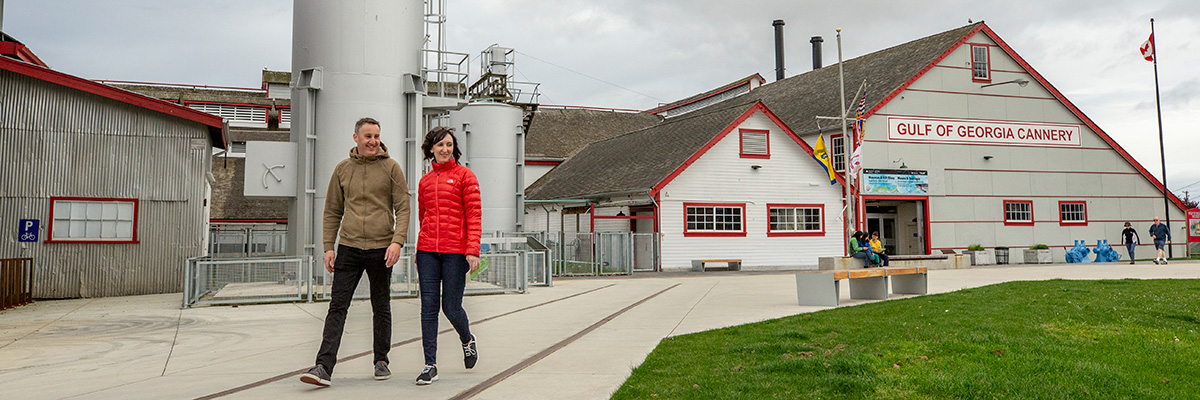What we heard - A consultation summary for the 2024 management plan
Gulf of Georgia Cannery National Historic Site
Introduction
A management plan, prepared in consultation with Indigenous peoples and Canadians, is the main public accountability document for heritage places administered by Parks Canada. A management plan identifies the vision and long-term strategic direction for each heritage place and describes how that vision and direction will be achieved over a ten-year timeframe. The 2024 management plan replaces the 2011 Gulf of Georgia Cannery National Historic Site of Canada Management Plan.
The Gulf of Georgia Cannery Society operates the national historic site with support from Parks Canada. The working relationship between the Gulf of Georgia Cannery Society and Parks Canada began in the mid-1980s, to ensure that visitors experience, and learn about, Canada’s heritage places and the stories of the site and the West Coast fishing industry. The Gulf of Georgia Cannery National Historic Site is situated on the traditional ancestral lands and waters of xʷməθkʷəy̓əm (Musqueam). Primarily working with xʷməθkʷəy̓əm (Musqueam) First Nation and the Gulf of Georgia Cannery Society, Parks Canada will make decisions to meet the objectives and targets identified in the management plan. It is important that presenting the cultural and historic setting of the area includes the use and occupancy of the Fraser River estuary in the times before the development of a European colonial resource extraction industry and fish canneries.
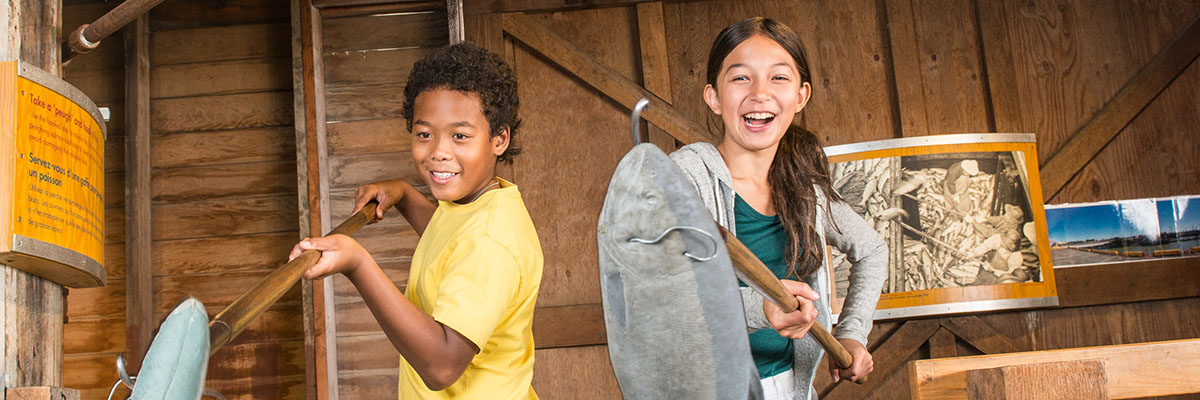
Engagement and Consultation
Public involvement is the cornerstone of Parks Canada’s management plans and ensures that the views of, and feedback from, Indigenous peoples and Canadians help shape the future of heritage places. Indigenous communities, as well as partners, interest-holders, and the public, participated in the development of the management plan.
Engagement and consultation occurred in two distinct phases: Phase 1 helped inform the development of the draft management plan, whereas Phase 2 gathered feedback on the proposed vision and key strategies to help complete the final management plan.
Phase 1 engagement and consultation activities
Parks Canada, with the support of the Gulf of Georgia Cannery Society, invited local First Nations, as well as various partners and interest-holders, to participate in Phase 1 consultation. Invitees responded and provided preliminary feedback through virtual meetings and discussions, to inform the development of the draft management plan. Parks Canada completed an initial What We Heard report in late 2023.
Phase 2 engagement and consultation activities
Phase 2 consultation began in spring 2024. The draft management plan was shared with First Nations, partners, interest-holders, and the public. In addition to in-person and virtual consultation sessions with partners and interest-holders, the majority of consultations took place on an online platform. Participants provided feedback on the proposed vision and key strategies to help complete the management plan and this final What We Heard report.
Online engagement platform
Parks Canada developed an online consultation and engagement platform to collect feedback on the draft management plan in Phase 2. A survey enabled participants to read and rate the draft management plan and provide feedback on the proposed vision and key strategies. The online platform also aimed to build awareness of the planning process with links to key resources. The platform was open for input from March 19 to April 19, 2024.
Virtual and in-person sessions
Parks Canada held virtual and in-person sessions with partners and interest-holders during consultations. Participants were asked questions to develop and clarify the vision, key strategies, and objectives in the management plan. In addition, they were asked for feedback on the management planning process, what Parks Canada and the Gulf of Georgia Cannery Society were doing well, and what could be improved. Note-takers recorded all participant feedback.
Consultation packages by mail and email
Some participants provided feedback by mail or email. Parks Canada arranged follow-up phone calls for additional clarification on feedback provided, as required.
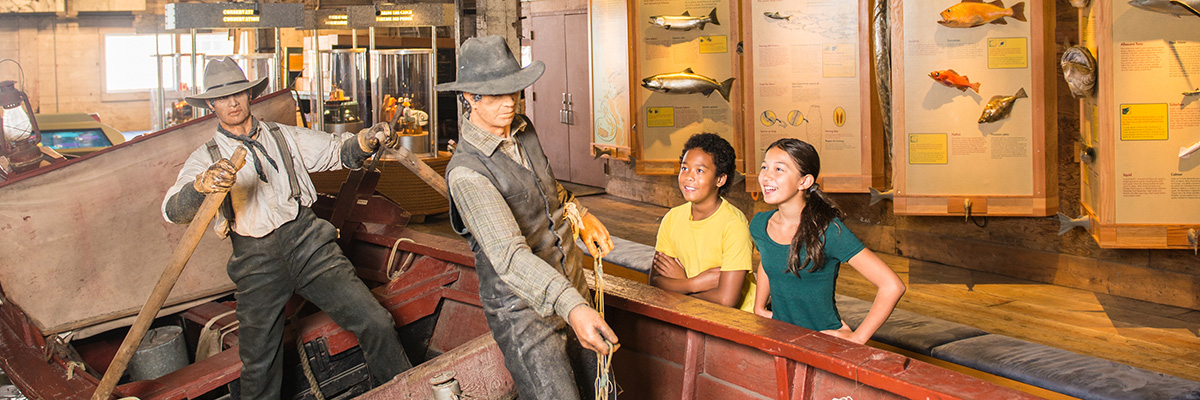
Who we heard from
Throughout the planning process and two consultation phases, Parks Canada primarily heard from community members, partners, interest-holders, and the public residing in Metro Vancouver. xʷməθkʷəy̓əm (Musqueam) First Nation, the Gulf of Georgia Cannery Society, and a variety of partners and interest-holders were personally invited to participate, while the public was invited through social media, media relations, and other communications efforts.
First Nations communities
xʷməθkʷəy̓əm (Musqueam) First Nation provided written feedback that focused on the framing and context of their traditional ancestral lands and waters in relation to the site. xʷməθkʷəy̓əm (Musqueam) First Nation leadership expressed interest in working more closely with Parks Canada on areas of mutual interest in the years to come.
Partners and interest-holders
Partners and interest-holders (heritage organisations, tourism industry, municipalities, and academia, among others) participated in a total of 15 in-person and virtual consultation sessions, some in the first phase of consultation and some in the second. A total of 53 individuals participated.
Public and the online platform
During Phase 2 consultation, while most online participants hailed from Metro Vancouver, other participant locations included: Victoria, Surrey, Abbotsford, Winnipeg (Manitoba), Kanata (Ontario) and Hinton (Alberta).
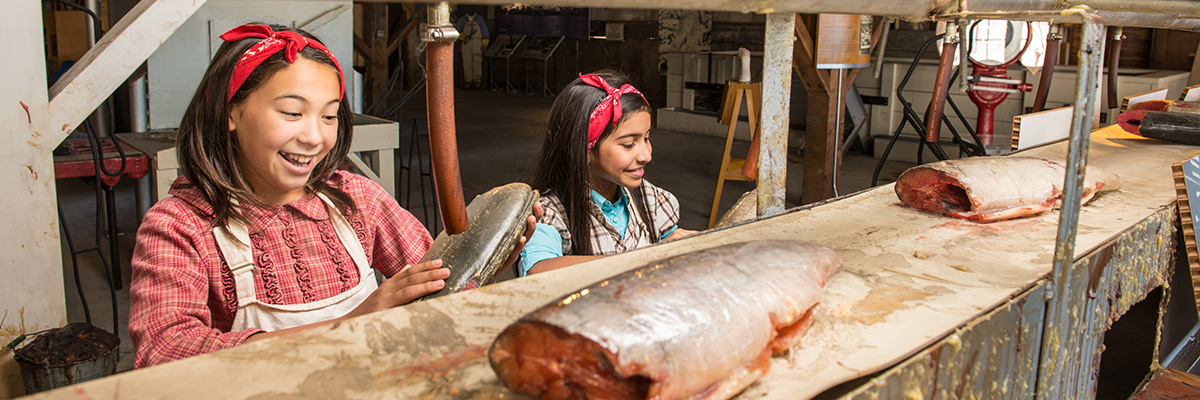
What we heard
All feedback was carefully reviewed and considered to finalize the 2024 Gulf of Georgia Cannery National Historic Site Management Plan. Many thanks to all who participated. The feedback will help shape the management of the Gulf of Georgia Cannery National Historic Site.
While we carefully reviewed and considered all feedback, not all suggestions and concerns were incorporated into the final management plan. Some comments have directly influenced the management plan, and others have been flagged for further consideration during the implementation of the plan, or the preparation of associated plans and strategies, over the next ten years.
During Phase 1 consultation, responses helped identify priority issues and gaps that informed the proposed vision and key considerations for the draft management plan. Participants identified and discussed the following priorities:
- The site is an authentic and important heritage place that is unique in the region and an important part of Steveston and Richmond.
- The site and the stories have connections to the stewardship of lands and waters since time immemorial by First Nations, and to a harbour that is active with fishing boats and fishers today. The diverse perspectives and stories that are represented onsite, specifically those of First Nations, Chinese, Japanese, and several European cultures, are important.
- While the visitor experience is immersive and experiential, it also needs to change, adapt, and remain relevant to different generations and new audiences.
- It is important to strengthen relationships with diverse communities and individuals, as well as find ways to remain relevant in the context of changes occurring in the community and the region.
- Cultural resources play a critical role in sharing the stories of the people whose traditions and labour have been the foundation of industrial fishing on Canada’s west coast.
- Participants identified climate change as a consideration, and its impacts on the visitor experience and conservation of the site, historic buildings, and collections.
- The site could provide opportunities for researchers to explore various topics and be a hub for education and research.
Refining the vision
During Phase 2, respondents commented that the proposed vision was too long and lacked clarity and substance. While most respondents (66%) selected “agree” regarding the elements of the draft vision, 33% of respondents selected the “somewhat agree” option. Based on that result and the overall feedback, Parks Canada refined the vision to be more concise and clearly articulate the desired future state of the Gulf of Georgia Cannery National Historic Site. Updates to each key strategy also included feedback from respondents.
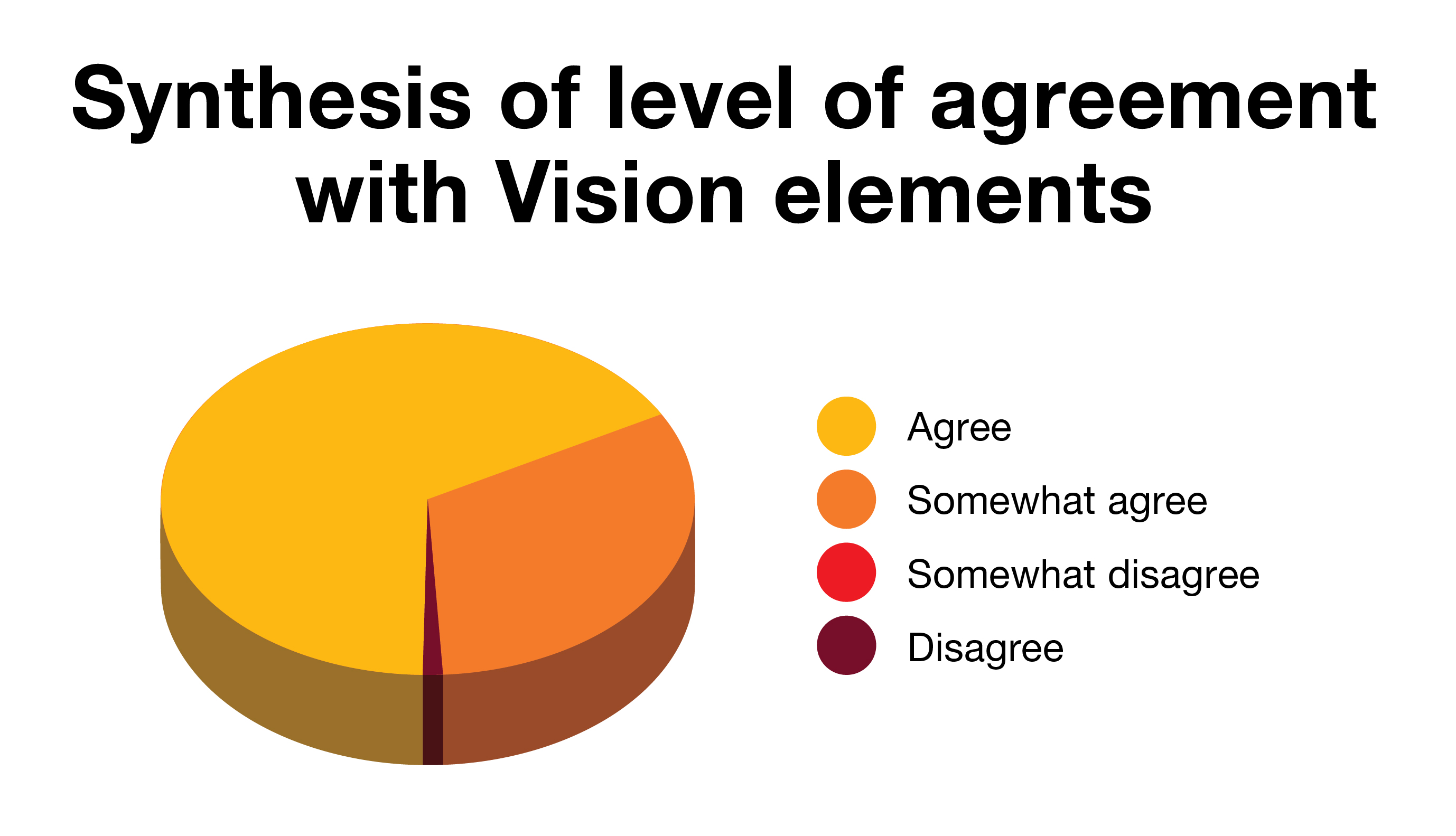
Descriptive text for graphic
A circular, three-dimensional graphic showing a synthesis of respondent’s level of agreement with elements of the draft vision for the Gulf of Georgia Cannery National Historic Site. A legend to the right of the graphic lists the level of agreement respondents could select beside a small circle of corresponding colour as follows: “agree” in yellow, “somewhat agree” in orange, “somewhat disagree” in red, and “disagree” in burgundy. About two thirds of the circle is yellow, showing the percentage of respondents who agreed with the draft vision statement. Approximately one third is orange, showing the percentage of respondents who somewhat agreed with the vision. A small wedge is burgundy showing the 1% of respondents who disagreed with the vision. No respondents selected the “somewhat disagree” option, so no red appears in the circular graphic.
Feedback on the key strategies and objectives
Each key strategy contains objectives and targets to guide site management and decision-making over the next ten years. The objectives describe desired outcomes following implementation of program activities. During Phase 2, the feedback respondents provided on each key strategy and the associated objectives led to the following updates.
Working with communities
We updated the first key strategy to emphasise the importance of collaborations and relationships that support the success and stewardship of the Gulf of Georgia Cannery National Historic Site. We also clarified roles. A key aspect is the role the Gulf of Georgia Cannery Society plays in collaboration, relationship-building and working with communities. Based on feedback from respondents, Parks Canada clarified the approaches to building relationships and working together with local First Nations, Japanese Canadians, Chinese Canadians, and other cultural communities whose role is pivotal to tell their stories about Steveston’s canneries and the West Coast fishing industry.
“… Build community by involving communities… people learn best through experiences…”
Conserve tangible and intangible heritage
We updated the second key strategy to include intangible heritage. The conservation of intangible, as well as tangible heritage, resonated with respondents seeking to ensure the preservation and sharing of the practices, knowledge, and skills of various communities and groups connected to fishing and canneries on the west coast.
“… Consider focusing more on the intangible cultural heritage. Objects tend to emphasise white, wealthy men. Stories are important. Connect people to intangibles outside the walls of the place…”
Impacts of climate change
There are no updates to this strategy. Parks Canada and the Gulf of Georgia Cannery Society will collaborate to better understand the range of options and mitigations to respond to environmental threats that may have an impact at the site. Parks Canada and the Gulf of Georgia Cannery Society are committed to work together to manage and monitor the site while making strategic investments.
“… opportunities to work together and mitigate climate change, … and to reduce long-term costs…”
Improve management of historic objects collection
We updated the third key strategy to note that these aspects will be considered further during the completion and implementation of the site’s interpretation plan, as they are operationally focused. Assessment of the collection of historic objects is necessary to ensure appropriate decision making. Respondents encouraged Parks Canada and the Gulf of Georgia Cannery Society to expand the role of conservation to include the inherent stories and broader meaning of the objects.
Share challenging and inclusive stories
While most of the details will be part of the site’s interpretation plan, the management plan was updated to include difficult topics and the importance of diverse people sharing their own experiences. Respondents encouraged Parks Canada and the Gulf of Georgia Cannery Society to broaden storytelling when renewing and developing on-site exhibits and programs. These elements are reflected in the first and third key strategies and corresponding objectives.
“Don't avoid complex and difficult stories.”
Renew visitor experiences and programs
We updated the third key strategy and objective 3.4. Respondents expressed a desire for growth in visitation and strong connections with newcomers to Canada and international visitors as key markets for products. Experiential learning, new and innovative programs, and exhibits are an important aspect of achieving the vision for the site over the next ten years.
Increase promotions and outreach efforts
We clarified the third key strategy and corresponding objectives. Promotion, cross-promotion, and outreach are important to help build awareness and understanding, and better connect the site and the stories to more people. Parks Canada visibility and awareness could also be increased.
Contact us
Gulf of Georgia Cannery National Historic Site
12138 Fourth Ave,
Richmond, BC V7E 3J1
Related links
- Gulf of Georgia Cannery National Historic Site — Plans and policies
- Gulf of Georgia Cannery National Historic Site — Management planning
- Gulf of Georgia Cannery National Historic Site of Canada Draft Management Plan, 2022
Related links
- Date modified :

